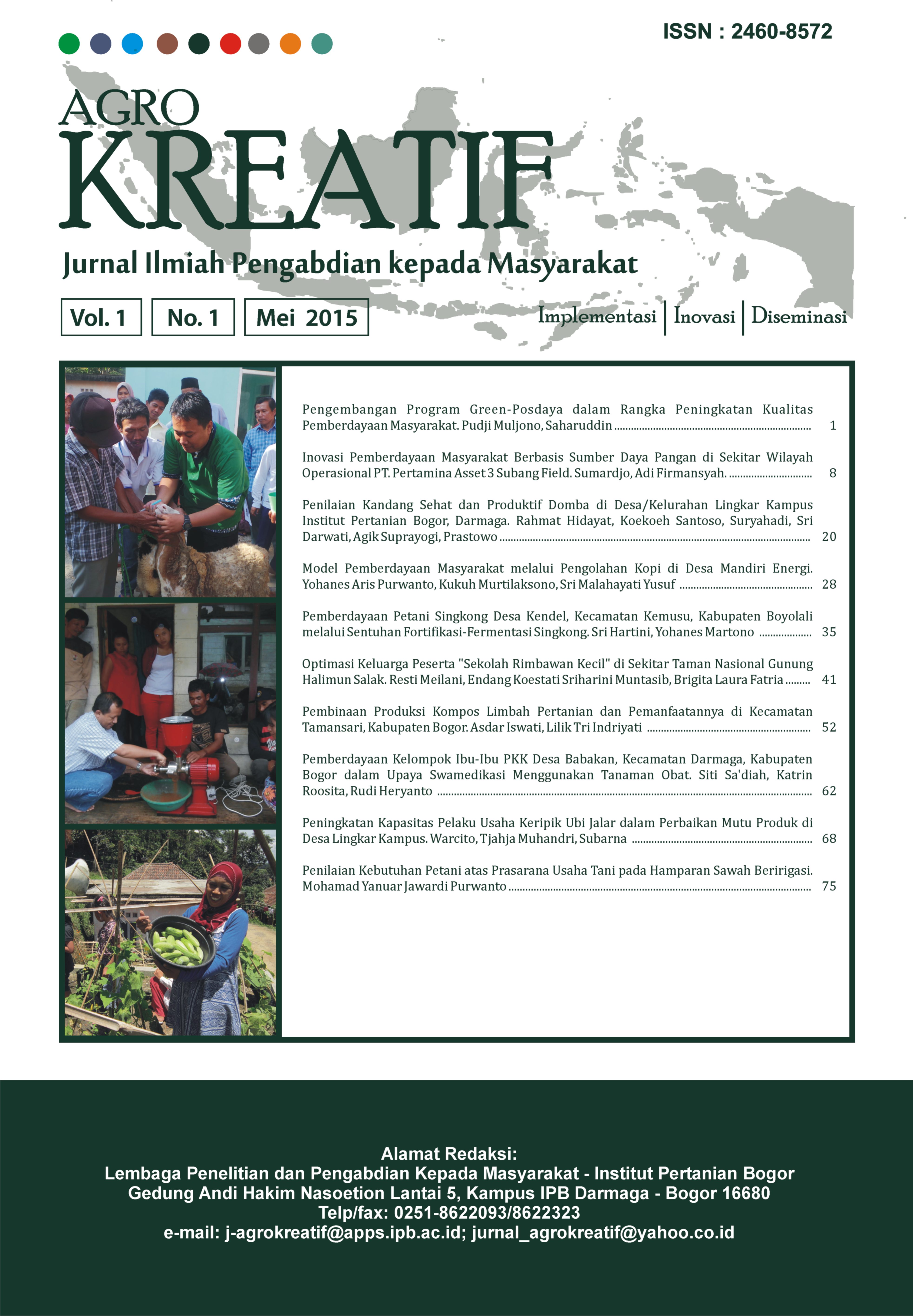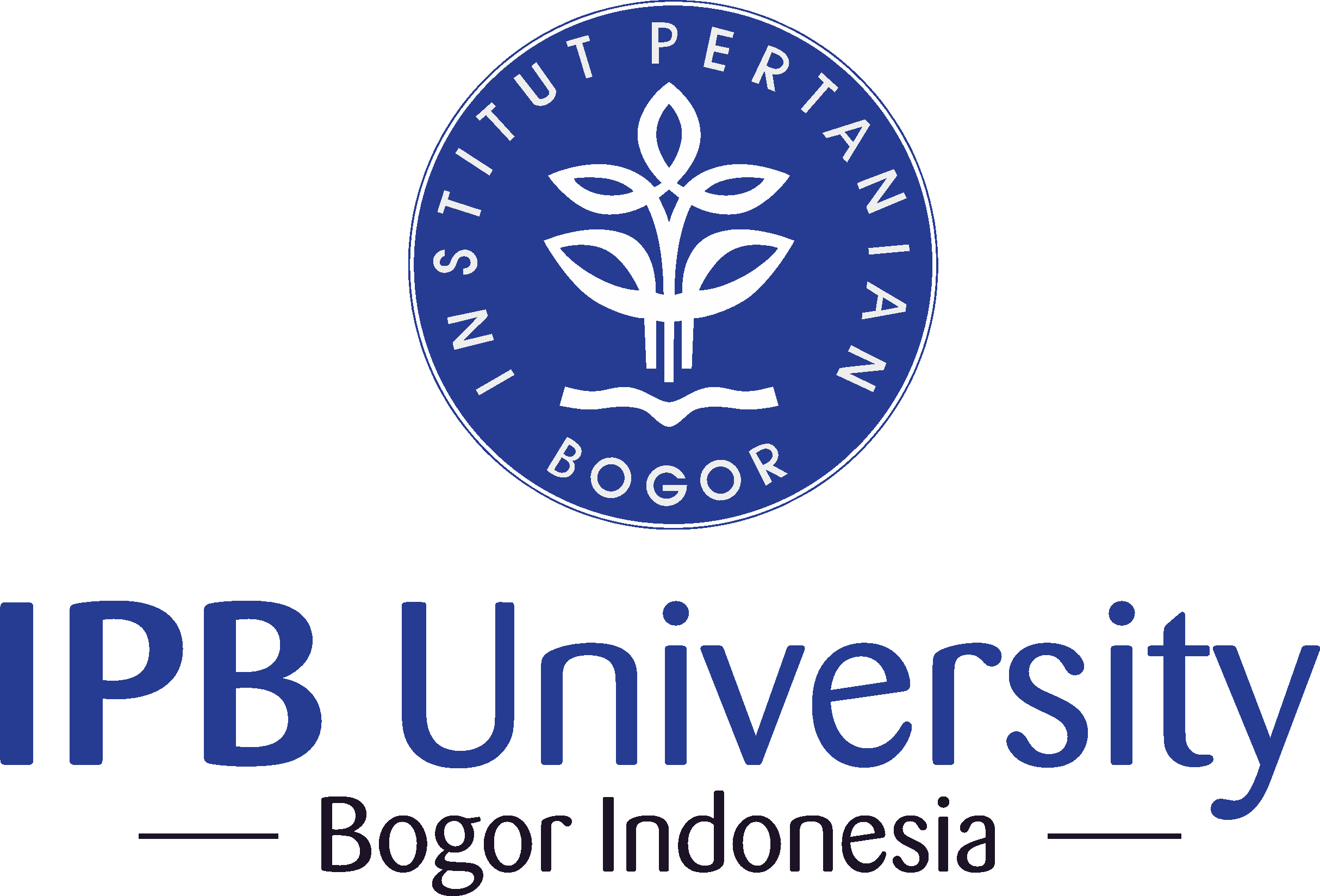Optimasi Keluarga Peserta “Sekolah Rimbawan Kecil” di Sekitar Taman Nasional Gunung Halimun Salak
Abstract
Sekolah Rimbawan Kecil (Serincil, literally means School of Little Forester) is nonformal conservation education for the children of Muara Kampong, Cibunian Village, Pamijahan Subdistrict, which is located adjacent to area of Gunung Halimun Salak National Park (GHSNP). The community of the kampong, including parents of Serincil children, relied on GHSNP area for their livelihood. Therefore, conservation education was also important for them to reduce their dependence on GHSNP area, and thus optimizing their role in conservation activities. Evaluation showed that the most intensive implementation of optimization subjects by the community was the one most suitable with their everyday life (dapur hidup/vegetable farming), while quite intensive on cattle health, and less intensive on poultry farming. Forest tree nursery should be a main priority to establish intensive cooperation between the community and GHSNP management.
Downloads
References
Alhempi RR, Harianto W. 2013. Pengaruh Pelati-han dan Pembinaan terhadap Pengembangan Usaha Kecil pada Program Kemitraan Bina Lingkungan. Media Riset Bisnis & Manajemen. 13(1): 20-38.
Athman J, Monroe M. 2001. Elements of effective environmental education programs. Halaman 37-48. [Internet]. [Diunduh 6 Dec 2013]. Tersedia pada: http://www.d.umn.edu/~ kgilbert/educ5165731/Readings/Elements%20of%20Effective%20EE.pdf.
Bunna AT, Muntasib EKSH, Masy’ud B. 2010. Desain Media Komunikasi untuk Pendidikan Konservasi dan Efeknya terhadap Perubahan Pengetahuan, Sikap, dan Perilaku Masyarakat di Kawasan Lindung Sungai Lesan, Berau, Kalimantan Timur. Forum Pascasarjana 33(3): 203-219.
Gravetter FJ, Forzano LA. 2006. Research Methods for The Behavioral Sciences. Ed ke-2. Belmont (US): Thomson Wadsworth.
Hanneman LE. 2013. The Effectiveness of Experiential Environmental Education: O'Neill Sea Odyssey Program Case Study. [Tesis]. San Jose (US): San Jose State University. [Internet]. [Diunduh 12 Jun 2013]. Tersedia pada: http://scholarworks.sjsu.edu/ etd_theses.
Neiswender C, Shepard R. 2003. Elements of Successful Stormwater Outreach and Education. Dalam Minamyer S, eds. Proceedings of National Conference on Urban Storm Water: Enhancing Programs at the Local Level held on February 17-20, 2003 in Chicago, IL. Cincinnati, Ohio(US): Environmental Protection Agency. [Internet]. [Diunduh 6 Dec 2013]. Tersedia pada: http://www.epa.gov/owow/NPS/natlstormwater03/25Neiswender.pdf.
[TNGHS] Taman Nasional Gunung Halimun Salak. 2011. Masterplan Taman Nasional Gunung Halimun Salak 2011-2026. Sukabumi (ID): Balai Taman Nasional Gunung Halimun Salak.
Widayati W. 2010. Analisis Pengaruh Pemberian Pelatihan, Modal Usaha, serta Cara-cara Mengolah Usaha terhadap Pendapatan Anggota P2M-BG di Kecamatan Tanon Kabupaten Sragen. [Tesis]. Surakarta (ID): Universitas Sebelas Maret
This work is licensed under a Creative Commons Attribution-NonCommercial 4.0 International License.



















